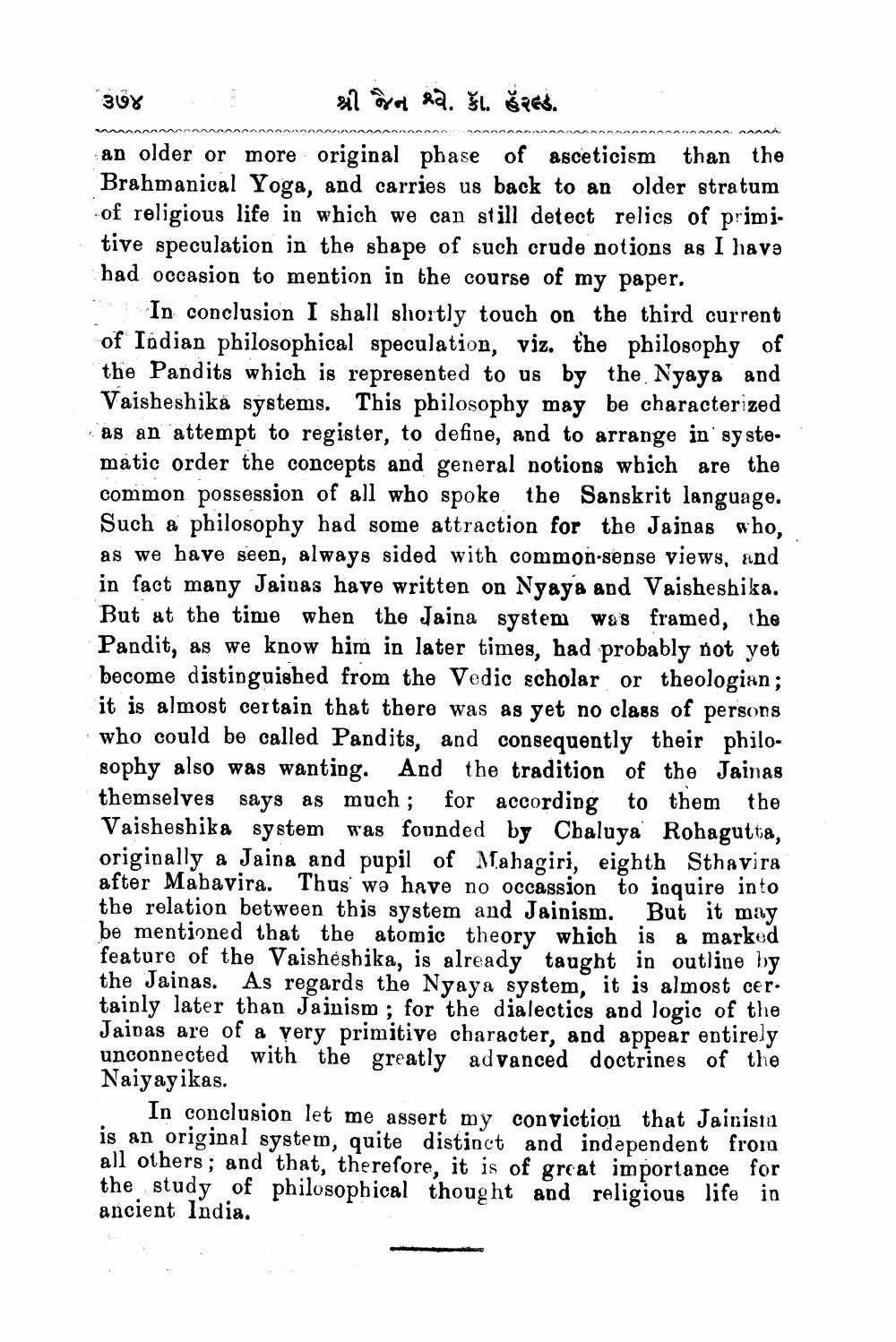________________
368
al örat . fl. 26%. an older or more original phase of asceticism than the Brahmanical Yoga, and carries us back to an older stratum of religious life in which we can still detect relics of primitive speculation in the shape of such crude notions as I have had occasion to mention in the course of my paper.
In conclusion I shall shortly touch on the third current of Indian philosophical speculation, viz. the philosophy of the Pandits which is represented to us by the Nyaya and Vaisheshika systems. This philosophy may be characterized as an attempt to register, to define, and to arrange in sy ste. matic order the concepts and general notions which are the common possession of all who spoke the Sanskrit language. Such a philosophy had some attraction for the Jainas who, as we have seen, always sided with common-sense views, and in fact many Jainas have written on Nyaya and Vaisheshika. But at the time when the Jaina system was framed, the Pandit, as we know him in later times, had probably not yet become distinguished from the Vedic echolar or theologian; it is almost certain that there was as yet no class of persons who could be called Pandits, and consequently their philosophy also was wanting. And the tradition of the Jainas themselves says as much; for according to them the Vaisheshika system was founded by Cbaluya Rohagutta, originally a Jaina and pupil of Mahagiri, eighth Sthavira after Mahavira. Thus we have no occassion to inquire into the relation between this system and Jainism. But it may be mentioned that the atomic theory which is & marked feature of the Vaisheshika, is already taught in outline by the Jainas. As regards the Nyaya system, it is almost cer•
ly later than Jainism : for the dialectics and logic of the Jainas are of a very primitive character, and appear entirely unconnected with the greatly advanced doctrines of the Naiyayikas.
In conclusion let me assert my conviction that Jainisia is an original system, quite distinct and independent from all others; and that, therefore, it is of great importance for the study of philosophical thought and religious life in ancient India.




